

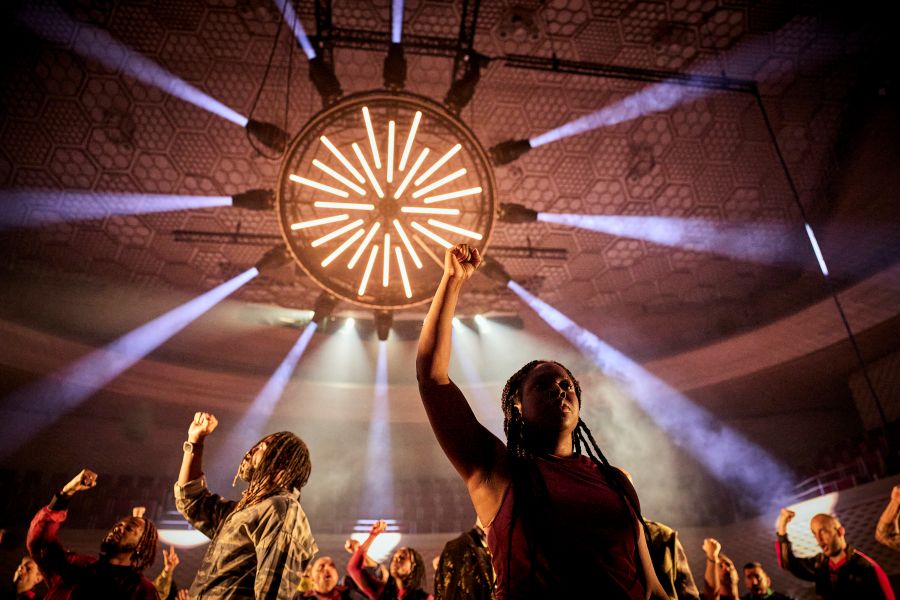
“Orchestrating a show made up of short-circuits between Rameau’s opera-ballet and street gestures, attitudes and dances. How can this music set in motion the ghosts of another era, sculpted by other stories? To seek to link the incantatory dimension of Rameau’s music with the cathartic scope of these dances. I’d like to take these movements, each of which in its own way tells the story of a minority, a community, sketching out an entry into the world through gesture, and gradually unhinge them, bringing them face to face with Leonardo García-Alarcón’s adaptation of Baroque music.”
Bintou Dembélé
De la voix des âmes – Les Indes Galantes is an artistic experiment fusing Jean-Philippe Rameau’s baroque opera with the raw energy of hip-hop and krump, directed and choreographed by Bintou Dembélé.
Born of the encounter between Bintou Dembelé and Leonardo García-Alarcón during the 2019 production of Les Indes Galantes at the Opéra Bastille, and inspired by the conductor’s innovative musical vision, this choreographed concert transcends the boundaries between musical genres and forms of bodily expression.
By exploring the roots of Western music through contemporary popular cultures, this creation reveals the universal pulse uniting music and dance. Rameau’s music is carried by Leonardo García Alarcón’s two ensembles, Cappella Mediterranea and the Chœur de Chambre de Namur, as well as a first-rate cast of soloists, while hip-hop and krump dancers from the Rualité structure passionately embody the complex emotions and irregular rhythms of the human soul.
De la voix des âmes – Les Indes Galantes invites the audience to plunge into a whirlwind of emotions, movement and sound, for an unforgettable and deeply moving artistic experience.
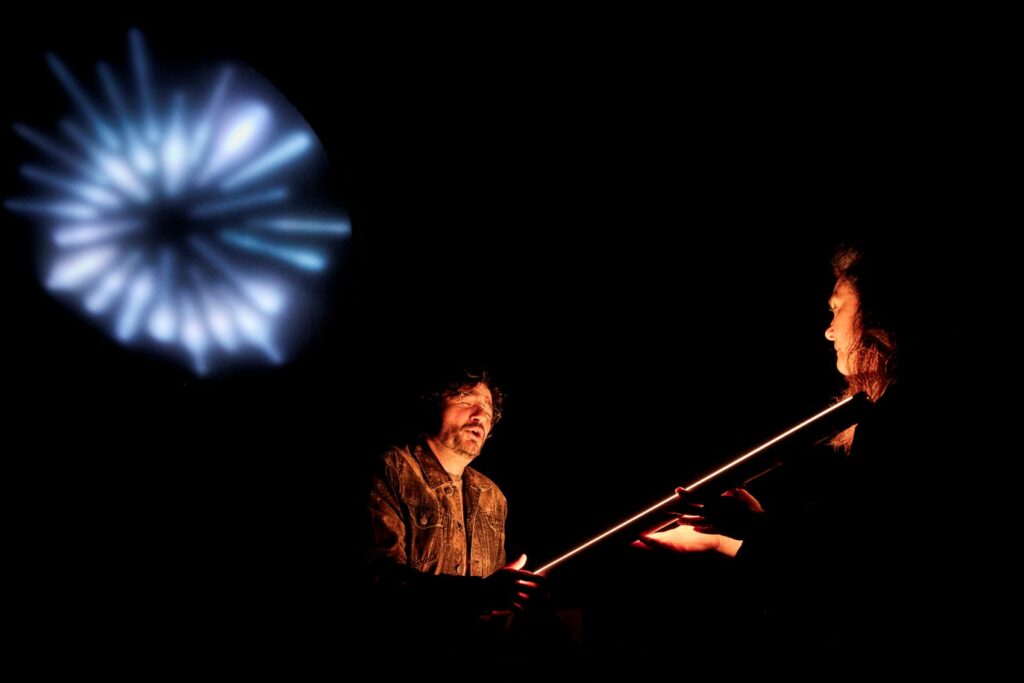
Opéra-ballet de Jean-Philippe Rameau (extraits)
Libretto : Louis Fuzelier (1735)
Julie Roset, soprano (La Seine Musicale, Teatro Real, Auditorium de Lyon) / Laurène Paternò, soprano (The Grange Festival, Theatro Municipal de São Paulo) — Amour, Phani, Fatime, Zima
Ana Quintans, soprano — Hébé, Émilie, Zaïre, Atalide
Mathias Vidal, tenor / Alasdair Kent, tenor (The Grange Festival uniquement) — Valère, Don Carlos, Tacmas, Damon
Andreas Wolf, bass — Bellone, Osman, Huascar, Ali, Don Alvar
Leonardo García-Alarcón, musical direction
Bintou Dembélé, artistic direction, choreography
Structure Rualité
Chœur de Chambre de Namur
Cappella Mediterranea
Noémie N’diaye, dramaturgy
Benjamin Nesme, lighting
Charlotte Coffinet, costumes
“Analyzing Western art music, trying to understand its origins through today’s popular music, brings us to the realization that human beings have always lived with music and dance: ever since parents cradled newborns against their breasts, and newborns felt the rhythm of their hearts through their chests… We don’t know who came first in music or dance, and we’d probably have to invent a word to describe the indefectible link that unites them. It is both the pulse of life and the apprenticeship of death. It is the rite of existence that enables us to face up to the unknown, the elusive that surrounds our presence in the world: music and dance link us to the universe, allowing us to be there, to take part in the great concert, the great ballet of stars, planets and black holes that is being played out in space.
It seems to me that the Baroque understood this, but not only that: it also perceived that every human emotion has an asymmetry of rhythm.Extreme emotions such as love, hate, anger, fear of death or abandonment have no measurable or quantifiable rhythm.Opera is precisely this utopian attempt to make the rhythm of music and dance coexist with that mysterious, elusive, all-too-human rhythm. So much so that – to pastiche Plato – we could say that in opera, emotion is the measure of all things. And that’s why we love this world so much, where everything finally escapes us and we lose our footing.
This feeling is not unique to learned or elitist music. Most of the world’s popular music is linked to this baroque feeling by the impulse, by the power of words, of text, of oral tradition… It is the power to touch – by simple and direct means – what is the very essence of all human existence.
C’est ce que j’ai ressenti en observant pour la première fois Bintou Dembélé travailler avec ses danseurs lors des Indes Galantes à l’Opéra Bastille. Lorsque j’ai pris conscience que ces danseurs étaient en train de créer sous mes yeux comme si la musique et son compositeur étaient bien vivants, je me suis dit que nous étions en train de vivre un miracle. Le spectacle a été créé en 2019 avec le succès que nous connaissons. J’ai eu par la suite l’occasion d’en montrer des extraits partout à travers le monde, provoquant à chaque fois le même choc. Aussi ai-je mis un point d’honneur à poursuivre l’aventure, à proposer à Bintou de répéter les conditions de ce miracle en élaborant une forme inédite de “concert chorégraphique” une forme qui nous permettrait d’explorer librement la relation des danseurs aux chanteurs, de continuer à aimer et faire aimer ce lien inouï qui s’est tissé entre la danse et la musique.”
Leonardo García-Alarcón

A Cappella Mediterranea / Structure Rualité / CAV&MA coproduction.
With the participation of La Seine Musicale and Maison de la Musique de Nanterre.
With support from CND Centre national de la danse, residency.
With support from the National Theatre & Concert Hall Taiwan (costumes).
A show inspired by the “Indes galantes” staged at the Opéra national de Paris in 2019.



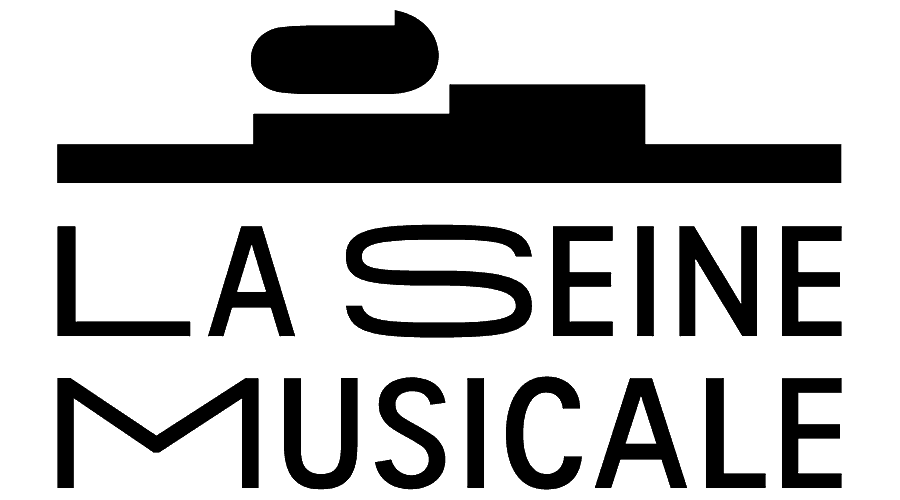
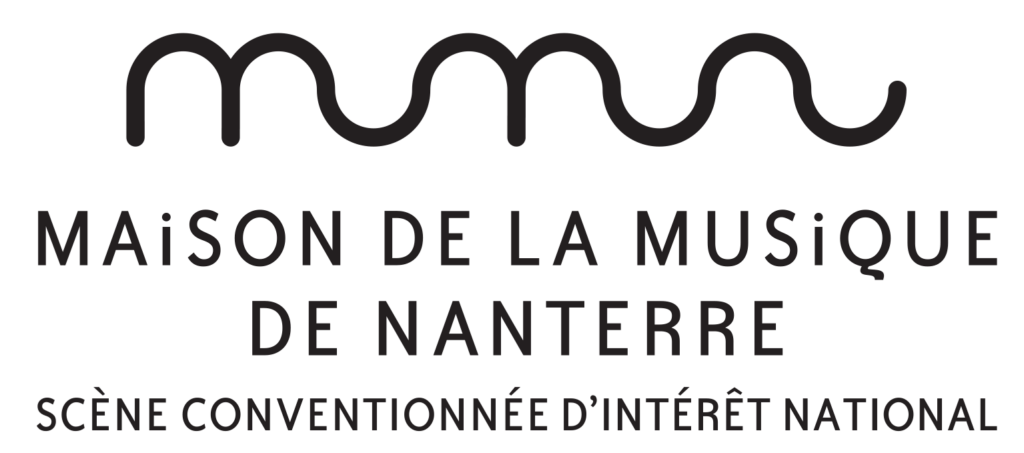
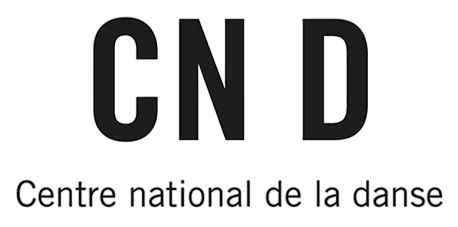


This production is supported by Brigitte Lescure and Christian et Magaret Hureau for the orchestra and soloists, and by Dance Reflections by Van Cleef & Arpels for the choreography.
La chorégraphie bénéficie du soutien de Dance Reflections by Van Cleef & Arpels.